Using 911facts.dk

How do you get the most out of this site?
Truth Movement
Publications
Booking

We are available for booking a lecture or a workshop here.

The hijackers were identified too quickly

Claim
The 19 “hijackers” were all identified within 72 hours. How is that possible, if there was no prior knowledge of the attack and the 19 persons0?Background
If it is impossible to identify the persons in question within the given time frame, it must mean that the authorities actually had prior knowledge of the attack and the 19 persons.Facts
When plane hijackings are investigated, and there is doubt about the hijackers’ identity and background, you examine the passenger lists1 and check each passenger’s background in order to eliminate them, one by one, until you have a list of suspects. The following information is collated in the publication “A Post September 11th Analysis” af Systems Research and Development2. When the passenger lists were examined, it was discovered that these persons were on a watch list at the immigration authorities:- Khalid al-Midhar, Flight 77, possible terrorist
- Nawaf al-Hazmi, Flight 77, possible terrorist
- Ahmed al-Ghamdi, Flight 175, illegal/expired visa
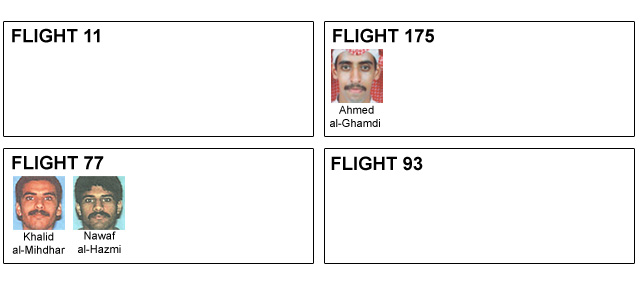
- Mohamed Atta, Flight 11
- Marwan al-Shehhi, Flight 175
- Waleed al-Shehri, Flight 11
- Wail al-Shehri, Flight 11
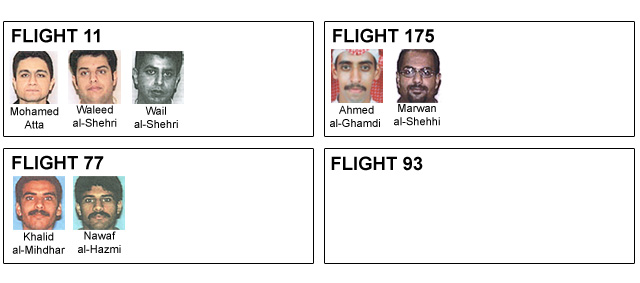

- Fayez Banihammad, Flight 175
- Mohand al-Shehri, Flight 175
- Abdulaziz al-Omari, Flight 11
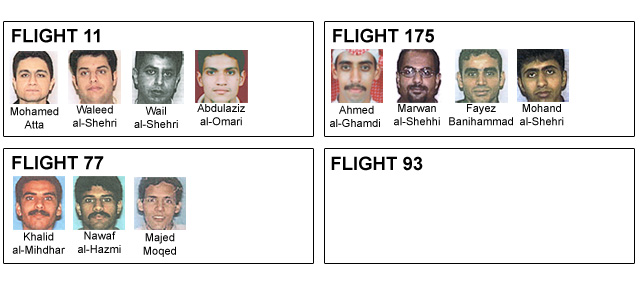
- Ahmed al-Ghamdi, Flight 175
- Hamza al-Ghamdi, Flight 175
- Salem al-Hazmi, Flight 77
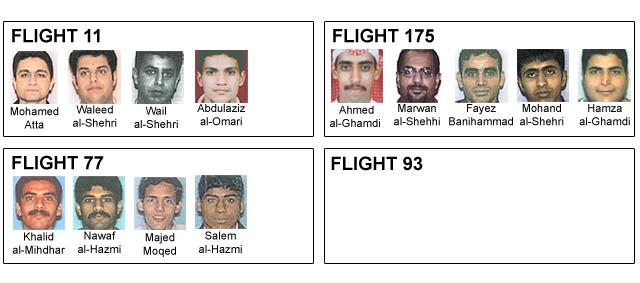
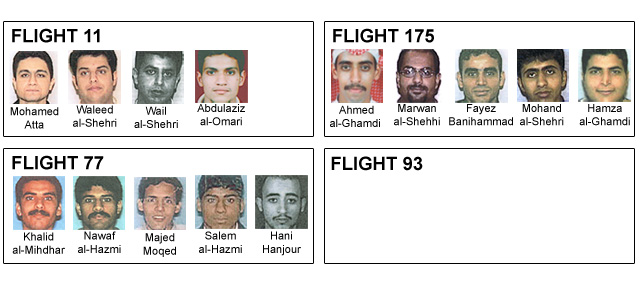
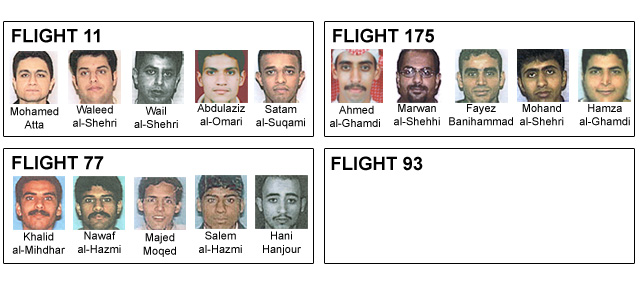
- Saeed al-Ghamdi, Flight 93
- Ahmed al-Haznawi, Flight 93
- Ahmed al-Nami, Flight 93

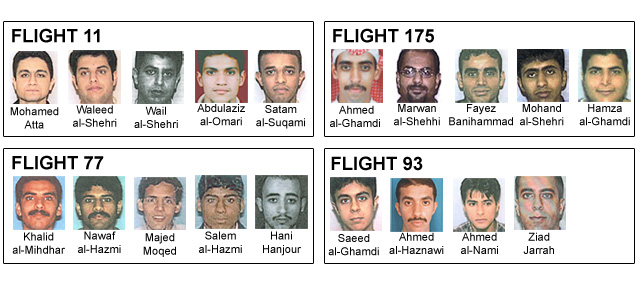
Logic
If it was known that the 19 would have been on board, it should not have taken three days to “identify” them. It could have been announced far earlier who the suspects were believed to be, and thus improved the reputation of the FBI, which was not exactly top notch in the days after the terror attack. There is nothing legal that presupposes that suspects must be identified within 72 hours. The time frame is thus completely arbitrarily chosen, from personal preferences. Naturally, this cannot be used to suspect criminal activities; Ordinary citizens do not make up the criteria by which persons must be suspected from, that is solely the responsibility of the police and, finally, the prosecution.Conclusion
The claim is therefore:- False
- Undocumented
- In conflict with applicable legal principles
Sources
-
“The 19 “hijackers” were all identified within 72 hours. How is that possible, if there was no prior knowledge of the attack and the 19 persons?” “De 19 “flykaprere” blev alle identificeret inden for 72 timer. Hvordan er det muligt hvis ikke man havde noget forhåndsviden om aktionen og de 19 personer.” Rasmus Kristensen, email til redaktionen
- Passenger manifests, fact sheet
- A Post September 11th Analysis, Systems Research and Development (PDF)
- FBI Announces List of 19 Hijackers, FBI.gov
- How FBI determined the 19 hijackers’s identities
- 9/11 and Terrorist Travel, Staff Report of the National Commission on Terrorist Attacks Upon the United States
- Monograph on Terrorist Financing, Staff Report of the National Commission on Terrorist Attacks Upon the United States
- No plane hit the Pentagon
Q & A

